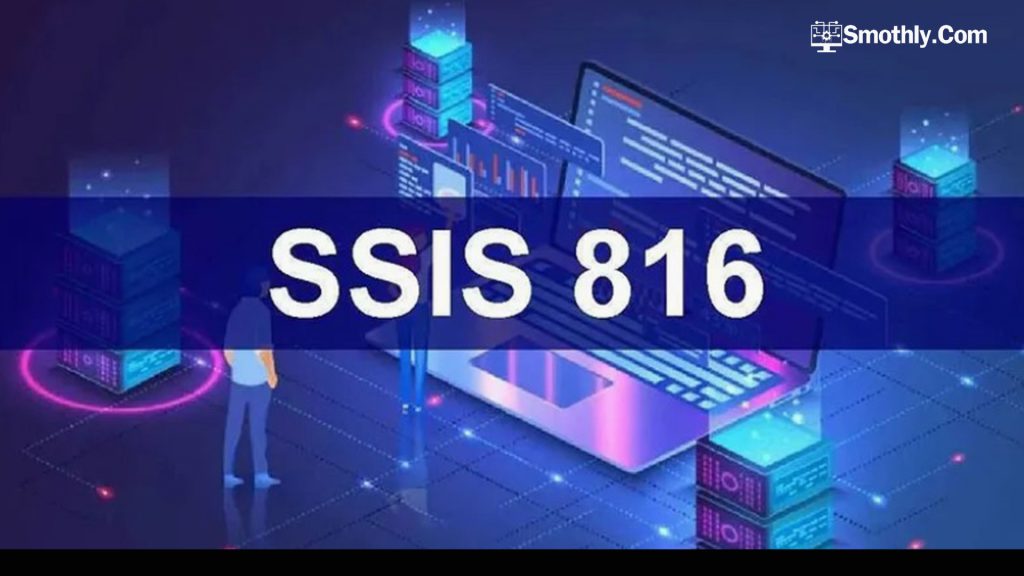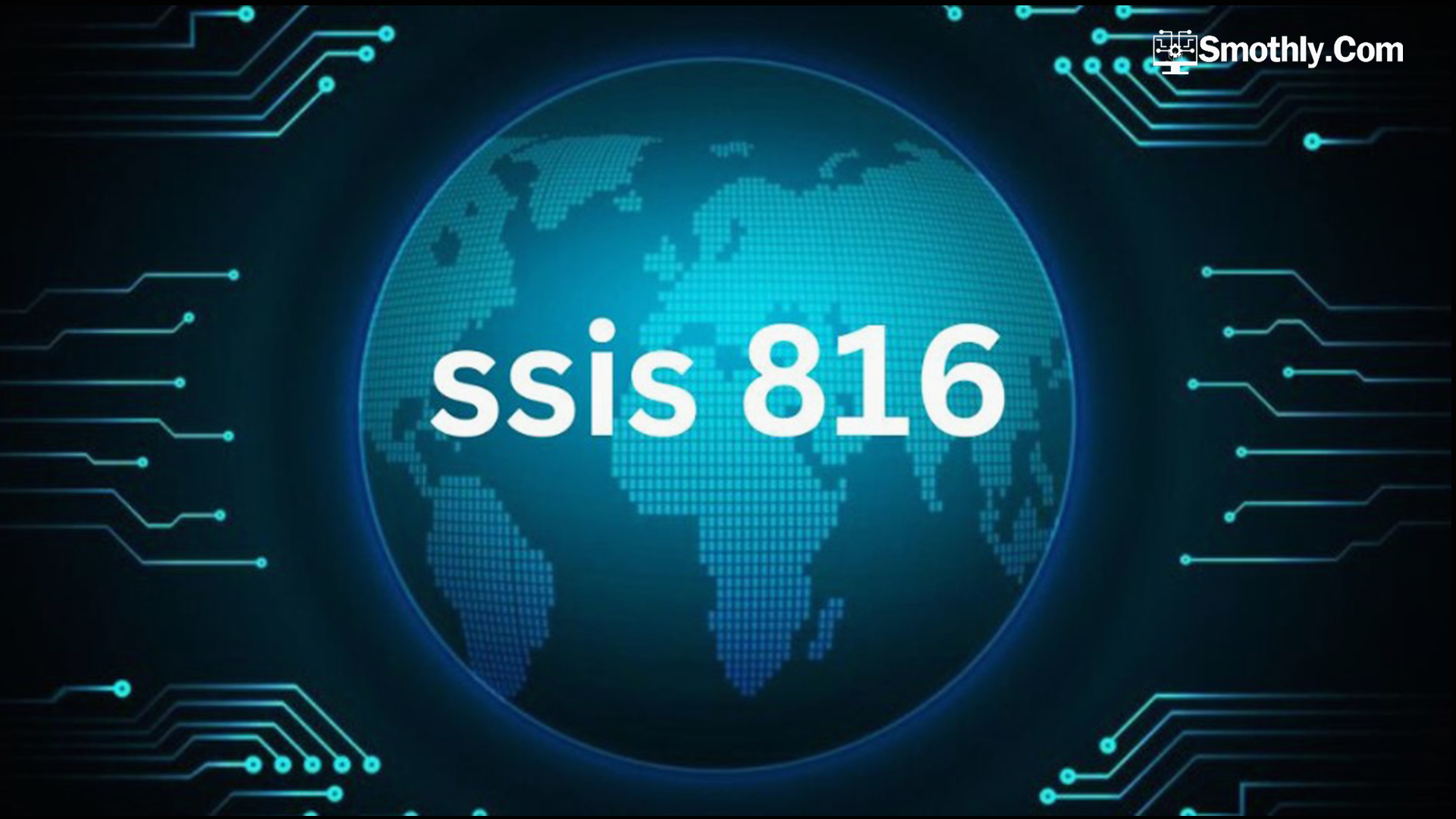In the realm of data management, SSIS 816 emerges as a pivotal tool, redefining how businesses handle and integrate their data. SQL Server Integration Services (SSIS) has long been recognized for its robust data transformation capabilities, and SSIS 816 takes this functionality to new heights. This article delves into what SSIS 816 is, its key features, benefits, and how it stacks up against other data integration solutions.
What is SSIS 816?
SSIS 816 is the latest version of Microsoft’s SQL Server Integration Services, designed to offer enhanced data integration capabilities. It simplifies the process of extracting, transforming, and loading (ETL) data from various sources into a unified system. This version is particularly noted for its advanced performance, scalability, and flexibility, making it an indispensable tool for modern data-driven enterprises.
At its core, SSIS 816 helps organizations consolidate data from multiple sources, including databases, flat files, and cloud services. Its intuitive design interface allows users to build complex workflows that automate data processes, ensuring that data is accurate, up-to-date, and ready for analysis.
Key Features of SSIS 816
SSIS 816 is packed with features that make it a standout tool in the data integration landscape:
- Advanced Data Transformation: With SSIS 816, users can perform intricate data transformations, including advanced text processing, machine learning integration, and real-time data streaming. This ensures that data is not only integrated but also optimized for various analytical needs.
- High Performance: One of the significant improvements in SSIS 816 is its enhanced performance. It handles large datasets efficiently, thanks to optimized data flows, better memory management, and support for parallel processing.
- Scalability: SSIS 816 is designed to scale according to organizational needs. Whether handling small-scale operations or enterprise-level projects, SSIS 816’s dynamic package configurations and flexible architecture make it adaptable to various data integration scenarios.
- Integration with Diverse Systems: SSIS 816 excels in integrating with a broad range of data sources, including cloud platforms, big data environments, and third-party applications. This seamless connectivity ensures that businesses can manage data from diverse ecosystems effortlessly.
- Enhanced Security: Data security is a top priority, and SSIS 816 addresses this with improved encryption for data at rest and in transit, along with granular user permissions. This robust security framework helps protect sensitive data throughout the integration process.
- Comprehensive Logging and Monitoring: SSIS 816 includes advanced logging and monitoring tools that provide real-time insights into data integration tasks. This feature is crucial for troubleshooting issues and optimizing performance, ensuring smooth and reliable data workflows.
Benefits of Using SSIS 816
Implementing SSIS 816 offers several benefits to organizations:
- Streamlined Data Integration: SSIS 816 simplifies the integration of data from multiple sources into a centralized system, improving data consistency and accessibility.
- Enhanced Efficiency: With its high performance and automation capabilities, SSIS 816 reduces manual intervention, thereby increasing operational efficiency and minimizing the risk of errors.
- Improved Decision-Making: By providing accurate and timely data, SSIS 816 supports better decision-making processes, allowing businesses to leverage data-driven insights for strategic planning.
- Cost Savings: SSIS 816’s scalability and performance improvements can lead to cost savings by reducing the need for additional resources and optimizing existing infrastructure.

Applications of SSIS 816
SSIS 816 is versatile and can be applied across various business scenarios:
- Data Migration: Ideal for migrating data between systems, whether upgrading databases, consolidating information, or transitioning to cloud-based solutions.
- Data Warehousing: Facilitates the aggregation of data from multiple sources into a data warehouse, enabling comprehensive analysis and reporting.
- Business Intelligence: Supports the preparation of data for business intelligence tools, ensuring that accurate and relevant data is available for reporting and analysis.
- Workflow Automation: Automates repetitive tasks such as data backups, system maintenance, and data synchronization, freeing up IT resources for more strategic initiatives.
- Real-Time Data Integration: Handles real-time data integration, making it suitable for environments that rely on up-to-the-minute data for immediate insights.
Top Alternatives to SSIS 816
While SSIS 816 is a powerful tool, several alternatives may also meet your data integration needs:
- Talend: An open-source tool offering extensive ETL capabilities and a user-friendly interface. Talend is known for its flexibility and cost-effectiveness.
- Apache Nifi: Provides real-time data flow capabilities with a drag-and-drop interface, making it ideal for immediate data insights and complex integrations.
- Azure Data Factory: A cloud-based solution that integrates seamlessly with other Microsoft tools, offering scalability and flexibility for cloud-based data management.
- Informatica PowerCenter: Known for its comprehensive features and enterprise-level data management capabilities, Informatica is a strong contender for large-scale data integration projects.
How to Pick the Best Tool for Data Integration
Selecting the right data integration tool involves evaluating several factors:
- Assess Your Needs: Determine the types of data you work with, including volume, variety, and velocity. Choose a tool that aligns with your specific data integration requirements.
- Scalability: Ensure the tool can handle future growth and increased data loads without compromising performance.
- User-Friendliness: Opt for tools with intuitive interfaces and comprehensive support to ease the learning curve and improve productivity.
- Integration Capabilities: Verify that the tool integrates seamlessly with your existing systems and data sources.
- Cost vs. Benefits: Consider both the initial investment and long-term benefits. A higher upfront cost might offer better performance and savings in the long run.
Conclusion
SSIS 816 is a robust and versatile tool for modern data integration needs. Its advanced features, high performance, and scalability make it an excellent choice for businesses looking to streamline their data processes and gain actionable insights. Whether you’re managing data migration, building a data warehouse, or automating workflows, SSIS 816 offers the tools and capabilities to meet your requirements.
While SSIS 816 excels in many areas, it’s essential to explore other options like Talend, Apache Nifi, and Azure Data Factory to find the best fit for your organization. By carefully assessing your needs and evaluating each tool’s strengths, you can ensure that your data integration strategy supports your business goals effectively.
For a successful data integration journey with SSIS 816, remember to stay updated with best practices, leverage the tool’s full range of features, and continuously refine your data processes to stay ahead in today’s fast-paced digital landscape.Learn More.
Ans:Yes, SSIS 816 supports real-time data integration, making it ideal for environments that require up-to-the-minute data insights.
Ans: Alternatives to SSIS 816 include Talend, Apache Nifi, Azure Data Factory, and Informatica PowerCenter. Each offers unique features and capabilities for data integration
Ans: SSIS 816 can integrate with a wide range of data sources, including databases, flat files, cloud platforms, and big data environments.





